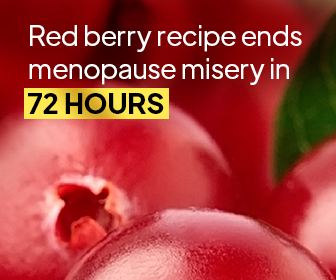If you were to see a box of black currants in the produce aisle at your local grocery store, you might assume that they were blueberries at first glance. What is more likely, however, is that you won’t see them at all – these berries are much less common in the United States than they are in Europe.
Just because black currants are not as common in the U.S. doesn’t mean that they aren’t worthy of your attention. In fact, these little blue-black berries are packed with antioxidants and healthy nutrients. Sometimes nicknamed the “forgotten fruit,” black currants are something you should seriously consider adding to your diet.
In this article, you’ll receive an overview of what black currants are, what benefits they can provide, and how you can use them. So, if you’re ready to learn more about this uncommon fruit, just keep reading!
What Are They and Where Do They Come From?
The black currant is a type of woody shrub native to the more temperate parts of northern and central Europe as well as northern Asia. These shrubs are grown specifically for their berries which grow in bunches throughout the summer months. Though the berries can be eaten raw, they are more commonly cooked into a variety of dishes or used to make jellies, jams, and syrups.
The scientific name for the black currant is Ribes nigrum and it belongs to the same family as red currants, white currants, and gooseberries. Though most commonly used in culinary preparations, black currants have been used in various forms of traditional medicine and they have also been used commercially in the production of dyes.
Important Nutritional Information
Generally speaking, black currants are rich sources of Vitamin C and various polyphenols. The berries themselves contain 82% water, 15% carbohydrate, 1% protein, and about 0.4% fat. Each 100-gram serving contains about 63 calories.
In terms of nutritional value, black currants contain about 181 mg of Vitamin C per 100-gram serving which is more than 200% your daily recommended allowance. A serving this size also contains significant amounts of iron and manganese as well as moderate amounts of Vitamin B5, Vitamin E, calcium, magnesium, phosphorus, and potassium.
In addition to being rich in nutrients, black currants also contain a number of phytochemicals such as antioxidants and anthocyanins. Anthocyanins are a type of plant pigment – they are responsible for giving black currants their deep blue-purple color. Black currants contain up to 15 different types of anthocyanins and they provide a number of beneficial properties, helping to prevent cancer, boost heart health, and reduce the risk for diabetes.
What Are the Health Benefits of Black Currants?
Though these little black berries may not look like much, they are loaded with health benefits. Here are the top six health benefits of black currants:
Improved Eye Health
The eye health-boosting benefits of black currants are related to two compounds – gamma-linolenic acid (GLA) and linoleic acid. Not only are these two compounds proven to help treat dry eye, but they have been shown to offer these benefits as well:
- Improving night vision/adaptability
- Increased blood flow to the eyes
- Reduced symptoms of visual fatigue
- Slowed progression of glaucoma symptoms
The anthocyanins in black currants may support eye health as well, according to a study conducted at the Sapporo Medical University School of Medicine. According to this study, anthocyanins in black currants help to improve blood flow to the eye and reduce vision loss in glaucoma patients[1].
Reduced Risk for Cancer and Slowed Cancer Growth
Not only do the anthocyanins in black currants protect eye health, but new research suggests that they may slow the growth and spread of cancer as well.
In one study, conducted at Northeastern Ohio University Colleges of Medicine and Pharmacy, showed that black currant extract had the ability to inhibit the growth of live cancer cells[2]. A Japanese study supports these findings, showing that the same extract blocked the spread of both breast cancer and endometrial cancer cells[3].
Improved Immunity and Protection from Pathogens
Black currants contain plenty of Vitamin C which is a proven immune booster. In fact, a single cup of these berries provides more than three times your recommended daily dose of this powerhouse vitamin!
In terms of its immune-boosting properties, Vitamin C has been shown to shorten the duration of colds and other respiratory tract infections in addition to protecting against pneumonia, malaria, and others. In fact, a study conducted by the Department of Public Health at the University of Helsinki in Finland determined that increased Vitamin C intake can reduce the incidence of the common cold by 91%[4].
Not only does Vitamin C boost the immune system, but it acts as an antioxidant to protect your cells against free-radical damage and it fights of numerous pathogens with its antimicrobial properties. These antimicrobial properties are so strong that a Japanese study published in Microbiology and Immunology showed that a black currant extract of just 1% concentration was enough to block several strains of common viruses like influenza and adenovirus[5].
Reduced Inflammation and Joint Pain
The GLA found in black currants supports eye health but it also promotes joint health. GLA is a type of omega-6 fatty acid that helps to reduce inflammation in the body, particularly in the joints. As such, black currants may help to reduce joint pain, stiffness, and soreness – it may even help to repair joint damage caused by rheumatoid arthritis.
Relief from Skin Conditions
The seeds of the black currant contain Vitamin E in higher amounts than the flesh of the berry itself, but both can boost skin health. More importantly, however, new research conducted by the National Psoriasis Foundation suggests that the oil in black currants could help to ease psoriasis symptoms and may slow the growth of psoriasis patches.
Decreased Plaque Buildup and Improved Heart Health
You may already know that grapes (and grape-based drinks like red wine) can support heart health, but the same is true for black currants. In addition to decreasing plaque buildup in the arteries, black currants may help to reduce blood pressure thanks to their potassium and GLA content. One study even showed that black currants can help improve blood flow which may improve exercise recovery[6].
Another health benefit that black currants offer is the prevention of herpes outbreaks for both oral and genital herpes. According to a study published in Phytotherapy Research[7], black currants help to stop the herpes virus from adhering to cells which may prevent the spread of the virus and prevent future outbreaks in combination with other treatments.
With all of these health benefits, you may be thinking about adding black currants to your diet. Keep reading to learn how to do it!

How Do You Include Them in Your Diet?
Now that you know the benefits of these little berries, you may be wondering how to include black currants in your diet. If so, you’ve come to the right place!
The simplest way to consume black currants is to simply eat the fresh berries – you can also use them to top salads, desserts, or even your morning bowl of cereal. Because they can be a little bit sour, however, it may be better to cook black currants into a sweet or savory dish combined with other flavors. These berries make for a tasty addition to sauces and baked goods as well as juices, jams, and jellies.
If you’re ready to try out black currants for yourself, this tasty recipe for black currant jam is the perfect place to start!
References
- [1] https://www.ncbi.nlm.nih.gov/pubmed/22985050
- [2] https://www.ncbi.nlm.nih.gov/pubmed/21121259
- [3] https://www.ncbi.nlm.nih.gov/pubmed/26395027
- [4] https://www.ncbi.nlm.nih.gov/pubmed/22985050
- [5] https://www.ncbi.nlm.nih.gov/pubmed/22985050
- [6] http://www.academia.edu/22469927/Effect_of_New_Zealand_Sujon_blackcurrant_on_resting_cardiovascular_function_in_triathletes
- [7] https://www.ncbi.nlm.nih.gov/pubmed/12820226








